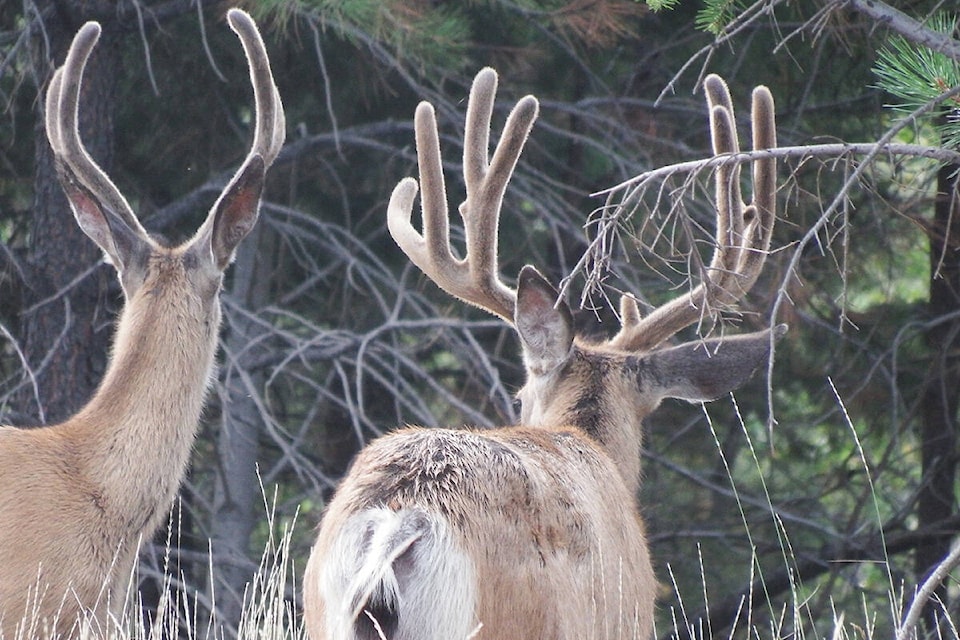As the province prepares for a cull of deer just outside Cranbrook to test for the presence of a fatal wildlife disease, questions remain about potential implications to urban deer within municipalities in the region.
The province recently announced a harvest of up to 25 deer from the two areas where test-positive cases of Chronic Wasting Disease (CWD) were identified south of Cranbrook, in order to see how prevalent the disease currently is in the region.
While the two test positive cases were in rural areas – one was south of Cranbrook on Highway 3 as a female whitetail road kill, while the other was a male mule deer harvested in the South Country – concerns for the urban deer population came up twice recently at a forum hosted by the BC Chapter of the Backcountry Hunters and Anglers and at a recent RDEK board meeting.
In both cases, provincial staff there are ongoing conversations with how to contain the spread of CWD, particularly in the context of dense urban deer populations in municipalities.
Any option to respond to CWD concerns with urban deer populations within municipalities will be a province-led initiative, Cranbrook Mayor Wayne Price told the Townsman in early March.
“We do not have the authority to undertake any programs, the province has made that very clear,” Price said. “The province has made it very clear to us that it’s their deer, it’s their responsibility.”
CWD is a condition of the central nervous system caused by infectious agents called prions, which kill cells in the brain as they accumulate and lead to neurological disease. It typically affects cervids, such as deer, moose, elk, and caribou.
The disease can spread, as prions may be shed by the infected animal into water or on plants and bedding through saliva, urine and feces.
It is 100 per cent fatal to wildlife with no known treatment.
However, it is not known to affect humans or livestock, but public health guidelines note that any meat from a test-positive animal should not be consumed.
Price said the discovery of CWD in the area is “extremely concerning,” particularly with the potential of it spreading from wild cervids into the city’s dense urban deer population.
“Certainly, I think in Cranbrook’s situation, where we do have our urban deer who are very densely populated here, the big concern is proximity to the animals that do carry the disease right now,” Price said.
Regional district staff and elected officials were recently updated on the presence of CWD in the East Kootenay, during a presentation on March 8.
Area B director for South Country, Stan Doehle, represents one of the two areas where a deer was found to be positive for the disease.
“I call it terrifying,” said Doehle. “Alberta’s had it several years, Montana’s had it for several years and it’s here now, and I don’t know how we’re going to stop it. As a hunter myself, I have major concerns on it, because when you go out in the wild and you harvest an animal, you don’t know if it’s infected or not and it’s a major turning point for recreational hunting in this area.”
The province has since implemented mandatory chronic-wasting disease testing, as well as restrictions on the transport and disposal of any road-killed cervids in the regions where the first cases were discovered.
That Initial Response Area includes land along Highway 3, situated between south of Cranbrook toward the United States border, west to the Moyie Range and east to the Macdonald Range.
Additionally, mandatory testing is in place for whitetail and mule deer harvested in MUs 4-1, 4-2, 4-3, 4-4, 4-5, 4-6, 4-7, 4-8, 4-23, 4-24 and 4-25 within one week of harvest.
Wildlife biologists have also noted that additional regulations and enforcement actions are likely in the future as more tests occur.
